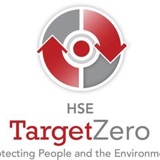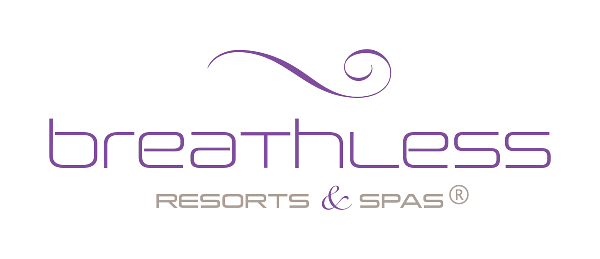Information
-
Water Market Environmental Review
-
Project Name
-
Program Review Date
-
Prepared by
-
Location
-
Personnel Participating in Program Review
Project Information
-
Background
-
Project Team
-
CH2M HILL Scope
-
Add media
Environmental Checklist Section 1
Previous Inspection
-
Are all non-complying activities now in order
-
All regulatory agency conducted inspections have resulted in no citations, no fines and nor orders
Site Housekeeping
-
Is general appearance of the site satisfactory (work areas neat and orderly)
-
is the site free from itter
-
Is waste/material storage areas segregated, stored off the ground, adequately covered to prevent release and properly labeled
-
Flammable materials segregated from other materials and in proper containers with contents clearly marked
-
Is noise, odors, drainage, etc.. from construction activities being controlled, preventing off-site complaints
-
Is maintenance of the site and equipment conducted routinely
-
Air
-
Are unsurfaced roads/areas dampened down
-
Is dust from construction controlled
-
Are vehicles with loads covered when arriving or leaving the site
-
Are speed limits designated or posted to minimize dust
-
Is asbestos containing material controlled and permitted during demolition or remediation
-
Is on site treatment of soil and groundwater containing hazardous constitutes operating under an air emissions permit
-
The need for an air emissions permit was evaluated ad a permit was demonstrated to not be required
-
Operation of equipment is occurring within local air quality restrictions
-
Air monitoring results demonstrate compliance within regulatory thresholds
-
Operations have been evaluated and documented to determine if a permit is required
-
90 day hazardous waste accumulation areas with a capacity > 26 gallons has air emission controls
-
Emission certificates exist for all applicable stationary engines
Stormwater Management
-
Staff are aware of location of surface drains, sanitary sewers, and surface water
-
Staff are familiar with Best Management Practices associated with stormwater controls
-
Surface water & drains are free of unauthorized discharges
-
Erosion and sediment controls are in place and operationial
-
Erosion and sediment controls are inspected at least weekly and immediately after each storm event
-
The need for a storm water permit was evaluated and a permit was demonstrated to not be required
-
Operational controls are in place to manage precipitation and storm water runoff from active portions of the site
-
A stormwater pollution prevention plan (SWPP) and a NPDES permit are in place for stormwater discharges, if > 1 acre is distrubited
-
If a SWPP exists, training and recordkeeping are conducted and documented
Wastewater Management
-
Waste-minimization procedures are in place to minimize wastewater volumes
-
Discharges to sewer systems flowing to POTWs are in accordance with discharge limits, permits limits and/or sewer use ordinance, with prior approval
-
On-site wastewater treatment is conducted in accordance with permit conditions and discharge limits, and with prior approval
-
Clean monitoring will development/purge water is discharged to the ground
-
Water extracted from a well is withdrawn per well registration or permit
-
Discharge to surface water are permitted and in accordance with permit limits
Environmental Checklist Section 2
Wetlands/Stream Encroachment
-
Wetland areas have been identified through field delineation and/or federal/state maps
-
A USACE Section 404 permit has been obtained for any filling, dredging or alternating of wetlands
-
A permit has been obtained for any stream bed or bank disturbances including filling, dredging and alterations including vegetations removal
-
Operations within streams are occurring within state or local work period restrictions
-
A section 404 or state permit has been obtained for any discharge of dredge or fill material into navigable waters
Materials, Fuel, Oil, and Waste storage
-
Materials, fuels, oil, and waste are stored away from drainage systems and surface water
-
Materials, Fuels, oil, and waste storage areas are inspected routinely and documented
-
Is the area near flammable and combustible liquids kept free of weeds, trash and combustible materials
-
Chemicals stored in appropriate and correctly labeled containers
-
Incompatible materials are segregated
-
Delivery of materials is adequately manaeged
-
Empty containers are appropriately managed
-
Condition of fuel/dispensing equipment is satisfactory
-
All fuel, oil, and chemical are stored and secured within secondary containment with 110% capacity
-
An SPCC Plan exists if aggregate above ground petroleum storage is > 1,320 gallons
-
Is waste being correctly segregated
-
Is general waste being correctly stored, with containers covered/closed to prevent wind dispersal
-
If hazardous waste quantities are generated on-site, the generator status is documented
-
If hazardous waste is accumulate on site, appropriate satellite containers and/or accumulation areas are identified
-
If hazardous waste is accumulated on-ste, all containers are labeled as hazardous waste, the date accumulation began, and containers are closed
-
If Haz waste is accumulated on-site, emergency information and equipment is available near the containers
-
If Haz waste is accumulate on-site they are removed prior to the 180 days, 90 day storage limit r are conditionally exempt
Land Disturbance/Excavation and Stockpiling
-
No evidence of vegetation die back due to site activities
-
Adequate control exists of excavation and or remediation activities
-
The need for a dig permit was evaluated and a permit was demonstrated to not be requiered
-
All staff are aware of the sources of any environmental contamination prior to digging
-
Soil suspected of contamination was sampled analyzed or process history used for characterization prior to excavation and management
-
Satisfactory handling and removal of contaminated material
-
Stockpiles are stored away from surface water and drainage systems and erosion control measures have been implemented
-
Excavated materials are properly segregated and managed
-
Soil stockpiles are shaped to drain surface water away from excavations, locate away from stormwater flows and managed to minimize dust generation
-
Transportation of soil off-site was evaluated and a permit was demonstrated to not be needed
Protected Species and Habitat
-
Protected species and habitat have been evaluated and determined not to be present
-
Staff are aware of location of protected species and habitat
-
The need for a permit was evaluated and a permit was demonstrated to not be required
-
Protected habitat is fenced off and movement of workers is restricted
-
Timing of work is scheduled in accordance with wildlife, nesting birds and roosting bats
-
Destruction of habitat has been prevented as well as the interruption of the movement of wildlife
-
Absence of bird activity and or nests
Pollution Prevention
-
Site is free of strained, soil, spills, releases or dead vegetation
-
Drip trays are available and used as necessary
-
Spill kits with adequate supplies are on-site
-
Routine inspections are conducted throughout the site and documented
-
All non-routine activities have been identified and mitigation measure implemented
-
Staff are behaving considerately and no site complaints during the week
-
Environmental compliance awareness and/or training is conducted on site with documented evidence
-
The site has no history of uncontrolled spills or releases
-
Large Quantity Generators of hazardous waste have an on-site contingency plan and emergency preparedness and prevention procedures
Incident Notification, Reporting and Tracking
-
Staff are aware of incident notification, reporting and tracking procedures
-
Environmental incidents, emergencies or uncontrolled releases have not occurred
Summary
-
Summary
-
Environmental Inspector











